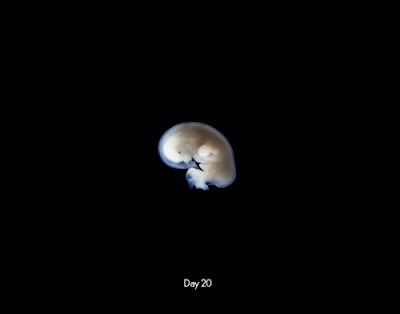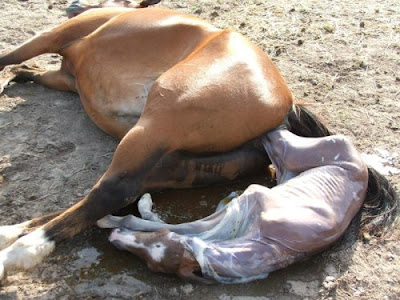The human body is an incredibly complex and intricate system, one that still baffles doctors and researchers on a regular basis despite thousands of years of medical knowledge. As a result, it shouldn’t be any surprise that even body parts and functions we deal with every day have bizarre or unexpected facts and explanations behind them. From sneezes to fingernail growth, here are 100 weird, wacky, and interesting facts about the human body.
The Brain
The human brain is the most complex and least understood part of the human anatomy. There may be a lot we don’t know, but here are a few interesting facts that we’ve got covered.
1. Nerve impulses to and from the brain travel as fast as 170 miles per hour. Ever wonder how you can react so fast to things around you or why that stubbed toe hurts right away? It’s due to the super-speedy movement of nerve impulses from your brain to the rest of your body and vice versa, bringing reactions at the speed of a high powered luxury sports car.
2. The brain operates on the same amount of power as 10-watt light bulb. The cartoon image of a light bulb over your head when a great thought occurs isn’t too far off the mark. Your brain generates as much energy as a small light bulb even when you’re sleeping.
3. The human brain cell can hold 5 times as much information as the Encyclopedia Britannica. Or any other encyclopedia for that matter. Scientists have yet to settle on a definitive amount, but the storage capacity of the brain in electronic terms is thought to be between 3 or even 1,000 terabytes. The National Archives of Britain, containing over 900 years of history, only takes up 70 terabytes, making your brains memory power pretty darn impressive.
4. Your brain uses 20% of the oxygen that enters your bloodstream. The brain only makes up about 2% of our body mass, yet consumes more oxygen than any other organ in the body, making it extremely susceptible to damage related to oxygen deprivation. So breathe deep to keep your brain happy and swimming in oxygenated cells.
5. The brain is much more active at night than during the day. Logically, you would think that all the moving around, complicated calculations and tasks and general interaction we do on a daily basis during our working hours would take a lot more brain power than, say, lying in bed. Turns out, the opposite is true. When you turn off your brain turns on. Scientists don’t yet know why this is but you can thank the hard work of your brain while you sleep for all those pleasant dreams.
6. Scientists say the higher your I.Q. the more you dream. While this may be true, don’t take it as a sign you’re mentally lacking if you can’t recall your dreams. Most of us don’t remember many of our dreams and the average length of most dreams is only 2-3 seconds–barely long enough to register.
7. Neurons continue to grow throughout human life. For years scientists and doctors thought that brain and neural tissue couldn’t grow or regenerate. While it doesn’t act in the same manner as tissues in many other parts of the body, neurons can and do grow throughout your life, adding a whole new dimension to the study of the brain and the illnesses that affect it.
8. Information travels at different speeds within different types of neurons. Not all neurons are the same. There are a few different types within the body and transmission along these different kinds can be as slow as 0.5 meters/sec or as fast as 120 meters/sec.
9. The brain itself cannot feel pain. While the brain might be the pain center when you cut your finger or burn yourself, the brain itself does not have pain receptors and cannot feel pain. That doesn’t mean your head can’t hurt. The brain is surrounded by loads of tissues, nerves and blood vessels that are plenty receptive to pain and can give you a pounding headache.
10. 80% of the brain is water. Your brain isn’t the firm, gray mass you’ve seen on TV. Living brain tissue is a squishy, pink and jelly-like organ thanks to the loads of blood and high water content of the tissue. So the next time you’re feeling dehydrated get a drink to keep your brain hydrated.
Hair and Nails
While they’re not a living part of your body, most people spend a good amount of time caring for their hair and nails. The next time you’re heading in for a haircut or manicure, think of these facts.
11. Facial hair grows faster than any other hair on the body. If you’ve ever had a covering of stubble on your face as you’re clocking out at 5 o’clock you’re probably pretty familiar with this. In fact, if the average man never shaved his beard it would grow to over 30 feet during his lifetime, longer than a killer whale.
12. Every day the average person loses 60-100 strands of hair. Unless you’re already bald, chances are good that you’re shedding pretty heavily on a daily basis. Your hair loss will vary in accordance with the season, pregnancy, illness, diet and age.
13. Women’s hair is about half the diameter of men’s hair. While it might sound strange, it shouldn’t come as too much of a surprise that men’s hair should be coarser than that of women. Hair diameter also varies on average between races, making hair plugs on some men look especially obvious.
14. One human hair can support 3.5 ounces. That’s about the weight of two full size candy bars, and with hundreds of thousands of hairs on the human head, makes the tale of Rapunzel much more plausible.
15. The fastest growing nail is on the middle finger. And the nail on the middle finger of your dominant hand will grow the fastest of all. Why is not entirely known, but nail growth is related to the length of the finger, with the longest fingers growing nails the fastest and shortest the slowest.
16. There are as many hairs per square inch on your body as a chimpanzee. Humans are not quite the naked apes that we’re made out to be. We have lots of hair, but on most of us it’s not obvious as a majority of the hairs are too fine or light to be seen.
17. Blondes have more hair. They’re said to have more fun, and they definitely have more hair. Hair color determines how dense the hair on your head is. The average human has 100,000 hair follicles, each of which is capable of producing 20 individual hairs during a person’s lifetime. Blondes average 146,000 follicles while people with black hair tend to have about 110,000 follicles. Those with brown hair fit the average with 100,000 follicles and redheads have the least dense hair, with about 86,000 follicles.
18. Fingernails grow nearly 4 times faster than toenails. If you notice that you’re trimming your fingernails much more frequently than your toenails you’re not just imagining it. The nails that get the most exposure and are used most frequently grow the fastest. On average, nails on both the toes and fingers grow about one-tenth of an inch each month.
19. The lifespan of a human hair is 3 to 7 years on average. While you quite a few hairs each day, your hairs actually have a pretty long life providing they aren’t subject to any trauma. Your hairs will likely get to see several different haircuts, styles, and even possibly decades before they fall out on their own.
20. You must lose over 50% of your scalp hairs before it is apparent to anyone. You lose hundreds of hairs a day but you’ll have to lose a lot more before you or anyone else will notice. Half of the hairs on your pretty little head will have to disappear before your impending baldness will become obvious to all those around you.
21. Human hair is virtually indestructible. Aside from it’s flammability, human hair decays at such a slow rate that it is practically non-disintegrative. If you’ve ever wondered how your how clogs up your pipes so quick consider this: hair cannot be destroyed by cold, change of climate, water, or other natural forces and it is resistant to many kinds of acids and corrosive chemicals.
Internal Organs
Though we may not give them much thought unless they’re bothering us, our internal organs are what allow us to go on eating, breathing and walking around. Here are some things to consider the next time you hear your stomach growl.
22. The largest internal organ is the small intestine. Despite being called the smaller of the two intestines, your small intestine is actually four times as long as the average adult is tall. If it weren’t looped back and forth upon itself it wouldn’t fit inside the abdominal cavity.
23. The human heart creates enough pressure to squirt blood 30 feet. No wonder you can feel your heartbeat so easily. Pumping blood through your body quickly and efficiently takes quite a bit of pressure resulting in the strong contractions of the heart and the thick walls of the ventricles which push blood to the body.
24. The acid in your stomach is strong enough to dissolve razorblades. While you certainly shouldn’t test the fortitude of your stomach by eating a razorblade or any other metal object for that matter, the acids that digest the food you eat aren’t to be taken lightly. Hydrochloric acid, the type found in your stomach, is not only good at dissolving the pizza you had for dinner but can also eat through many types of metal.
25. The human body is estimated to have 60,000 miles of blood vessels. To put that in perspective, the distance around the earth is about 25,000 miles, making the distance your blood vessels could travel if laid end to end more than two times around the earth.
26. You get a new stomach lining every three to four days. The mucus-like cells lining the walls of the stomach would soon dissolve due to the strong digestive acids in your stomach if they weren’t constantly replaced. Those with ulcers know how painful it can be when stomach acid takes its toll on the lining of your stomach.
27. The surface area of a human lung is equal to a tennis court. In order to more efficiently oxygenate the blood, the lungs are filled with thousands of branching bronchi and tiny, grape-like alveoli. These are filled with microscopic capillaries which oxygen and carbon dioxide. The large amount of surface area makes it easier for this exchange to take place, and makes sure you stay properly oxygenated at all times.
28. Women’s hearts beat faster than men’s.The main reason for this is simply that on average women tend to be smaller than men and have less mass to pump blood to. But women’s and men’s hearts can actually act quite differently, especially when experiencing trauma like a heart attack, and many treatments that work for men must be adjusted or changed entirely to work for women.
29. Scientists have counted over 500 different liver functions. You may not think much about your liver except after a long night of drinking, but the liver is one of the body’s hardest working, largest and busiest organs. Some of the functions your liver performs are: production of bile, decomposition of red blood cells, plasma protein synthesis, and detoxification.
30. The aorta is nearly the diameter of a garden hose. The average adult heart is about the size of two fists, making the size of the aorta quite impressive. The artery needs to be so large as it is the main supplier of rich, oxygenated blood to the rest of the body.
31. Your left lung is smaller than your right lung to make room for your heart. For most people, if they were asked to draw a picture of what the lungs look like they would draw both looking roughly the same size. While the lungs are fairly similar in size, the human heart, though located fairly centrally, is tilted slightly to the left making it take up more room on that side of the body and crowding out that poor left lung.
32. You could remove a large part of your internal organs and survive. The human body may appear fragile but it’s possible to survive even with the removal of the stomach, the spleen, 75 percent of the liver, 80 percent of the intestines, one kidney, one lung, and virtually every organ from the pelvic and groin area. You might not feel too great, but the missing organs wouldn’t kill you.
33. The adrenal glands change size throughout life. The adrenal glands, lying right above the kidneys, are responsible for releasing stress hormones like cortisol and adrenaline. In the seventh month of a fetus’ development, the glands are roughly the same size as the kidneys. At birth, the glands have shrunk slightly and will continue to do so throughout life. In fact, by the time a person reaches old age, the glands are so small they can hardly be seen.
Bodily Functions
We may not always like to talk about them, but everyone has to deal with bodily functions on a daily basis. These are a few facts about the involuntary and sometimes unpleasant actions of our bodies.
34. Sneezes regularly exceed 100 mph. There’s a good reason why you can’t keep your eyes open when you sneeze–that sneeze is rocketing out of your body at close to 100 mph. This is, of course, a good reason to cover your mouth when you sneeze.
35. Coughs clock in at about 60 mph. Viruses and colds get spread around the office and the classroom quickly during cold and flu season. With 60 mph coughs spraying germs far and wide, it’s no wonder.
36. Women blink twice as many times as men do. That’s a lot of blinking every day. The average person, man or woman, blinks about 13 times a minute.
37. A full bladder is roughly the size of a soft ball. No wonder you have to run to bathroom when you feel the call of the wild. The average bladder holds about 400-800 cc of fluid but most people will feel the urge to go long before that at 250 to 300 cc.
38. Approximately 75% of human waste is made of water. While we might typically think that urine is the liquid part of human waste products, the truth is that what we consider solid waste is actually mostly water as well. You should be thankful that most waste is fairly water-filled, as drier harder stools are what cause constipation and are much harder and sometimes painful to pass.
39. Feet have 500,000 sweat glands and can produce more than a pint of sweat a day. With that kind of sweat-producing power it’s no wonder that your gym shoes have a stench that can peel paint. Additionally, men usually have much more active sweat glands than women.
40. During your lifetime, you will produce enough saliva to fill two swimming pools. Saliva plays an important part in beginning the digestive process and keeping the mouth lubricated, and your mouth produces quite a bit of it on a daily basis.
41. The average person expels flatulence 14 times each day. Even if you’d like to think you’re too dignified to pass gas, the reality is that almost everyone will at least a few times a day. Digestion causes the body to release gases which can be painful if trapped in the abdomen and not released.
42. Earwax production is necessary for good ear health. While many people find earwax to be disgusting, it’s actually a very important part of your ear’s defense system. It protects the delicate inner ear from bacteria, fungus, dirt and even insects. It also cleans and lubricates the ear canal.
Sex and Reproduction
As taboo as it may be in some places, sex is an important part of human life as a facet of relationships and the means to reproduce. Here are a few things you might not have known.
43. On any given day, sexual intercourse takes place 120 million times on earth. Humans are a quickly proliferating species, and with about 4% of the world’s population having sex on any given day, it’s no wonder that birth rates continue to increase in many places all over the world.
44. The largest cell in the human body is the female egg and the smallest is the male sperm. While you can’t see skin cells or muscle cells, the ovum is typically large enough to be seen with the naked eye with a diameter of about a millimeter. The sperm cell, on the other hand, is tiny, consisting of little more than nucleus.
45. The three things pregnant women dream most of during their first trimester are frogs, worms and potted plants. Pregnancy hormones can cause mood swings, cravings and many other unexpected changes. Oddly enough, hormones can often affect the types of dreams women have and their vividness. The most common are these three types, but many women also dream of water, giving birth or even have violent or sexually charged dreams.
46. Your teeth start growing 6 months before you are born. While few babies are born with teeth in place, the teeth that will eventually push through the gums of young children are formed long before the child even leaves the womb. At 9 to 12 weeks the fetus starts to form the teeth buds that will turn into baby teeth.
47. Babies are always born with blue eyes. The color of your eyes depends on the genes you get from your parents, but at birth most babies appear to have blue eyes. The reason behind this is the pigment melanin. The melanin in a newborn’s eyes often needs time after birth to be fully deposited or to be darkened by exposure to ultraviolet light, later revealing the baby’s true eye color.
48. Babies are, pound for pound, stronger than an ox. While a baby certainly couldn’t pull a covered wagon at its present size, if the child were the size of an oxen it just might very well be able to. Babies have especially strong and powerful legs for such tiny creatures, so watch out for those kicks.
49. One out of every 2,000 newborn infants has a tooth when they are born. Nursing mothers may cringe at this fact. Sometimes the tooth is a regular baby tooth that has already erupted and sometimes it is an extra tooth that will fall out before the other set of choppers comes in.
50. A fetus acquires fingerprints at the age of three months. When only a small fraction of the way through its development, a fetus will have already developed one of the most unique human traits: fingerprints. At only 6-13 weeks of development, the whorls of what will be fingerprints have already developed. Oddly enough, those fingerprints will not change throughout the person’s life and will be one of the last things to disappear after death.
51. Every human spent about half an hour as a single cell. All life has to begin somewhere, and even the largest humans spent a short part of their lives as a single celled organism when sperm and egg cells first combine. Shortly afterward, the cells begin rapidly dividing and begin forming the components of a tiny embryo.
52. Most men have erections every hour to hour and a half during sleep. Most people’s bodies and minds are much more active when they’re sleeping than they think. The combination of blood circulation and testosterone production can cause erections during sleep and they’re often a normal and necessary part of REM sleep.
Senses
The primary means by which we interact with the world around us is through our senses. Here are some interesting facts about these five sensory abilities.
53. After eating too much, your hearing is less sharp. If you’re heading to a concert or a musical after a big meal you may be doing yourself a disservice. Try eating a smaller meal if you need to keep your hearing pitch perfect.
54. About one third of the human race has 20-20 vision. Glasses and contact wearers are hardly alone in a world where two thirds of the population have less than perfect vision. The amount of people with perfect vision decreases further as they age.
55. If saliva cannot dissolve something, you cannot taste it. In order for foods, or anything else, to have a taste, chemicals from the substance must be dissolved by saliva. If you don’t believe it, try drying off your tongue before tasting something.
56. Women are born better smellers than men and remain better smellers over life. Studies have shown that women are more able to correctly pinpoint just what a smell is. Women were better able to identify citrus, vanilla, cinnamon and coffee smells. While women are overall better smellers, there is an unfortunate 2% of the population with no sense of smell at all.
57. Your nose can remember 50,000 different scents. While a bloodhound’s nose may be a million times more sensitive than a human’s, that doesn’t mean that the human sense of smell is useless. Humans can identify a wide variety of scents and many are strongly tied to memories.
58. Even small noises cause the pupils of the eyes to dilate. It is believed that this is why surgeons, watchmakers and others who perform delicate manual operations are so bothered by uninvited noise. The sound causes their pupils to change focus and blur their vision, making it harder to do their job well.
59. Everyone has a unique smell, except for identical twins. Newborns are able to recognize the smell of their mothers and many of us can pinpoint the smell of our significant others and those we are close to. Part of that smell is determined by genetics, but it’s also largely do to environment, diet and personal hygiene products that create a unique chemistry for each person.
Aging and Death
From the very young to the very old, aging is a necessary and unavoidable part of life. Learn about the process with these interesting, if somewhat strange facts.
60. The ashes of a cremated person average about 9 pounds. A big part of what gives the human body weight is the water trapped in our cells. Once cremated, that water and a majority of our tissues are destroyed, leaving little behind.
61. Nails and hair do not continue to grow after we die. They do appear longer when we die, however, as the skin dehydrates and pulls back from the nail beds and scalp.
62. By the age of 60, most people will have lost about half their taste buds. Perhaps you shouldn’t trust your grandma’s cooking as much as you do. Older individuals tend to lose their ability to taste, and many find that they need much more intense flavoring in order to be able to fully appreciate a dish.
63. Your eyes are always the same size from birth but your nose and ears never stop growing. When babies look up at you with those big eyes, they’re the same size that they’ll be carrying around in their bodies for the rest of their lives. Their ears and nose, however, will grow throughout their lives and research has shown that growth peaks in seven year cycles.
64. By 60 years of age, 60-percent of men and 40-percent of women will snore. If you’ve ever been kept awake by a snoring loved one you know the sound can be deafening. Normal snores average around 60 decibels, the noise level of normal speech, intense snores can reach more than 80 decibels, the approximate level caused by a jackhammer breaking up concrete.
65. A baby’s head is one-quarter of it’s total length, but by age 25 will only be one-eighth of its total length. As it turns out, our adorably oversized baby heads won’t change size as drastically as the rest of our body. The legs and torso will lengthen, but the head won’t get much longer.
Disease and Injury
Most of us will get injured or sick at some point in our lives. Here are some facts on how the human body reacts to the stresses and dangers from the outside world.
66. Monday is the day of the week when the risk of heart attack is greatest. Yet another reason to loathe Mondays! A ten year study in Scotland found that 20% more people die of heart attacks on Mondays than any other day of the week. Researchers theorize that it’s a combination of too much fun over the weekend with the stress of going back to work that causes the increase.
67. Humans can make do longer without food than sleep. While you might feel better prepared to stay up all night partying than to give up eating, that feeling will be relatively short lived. Provided there is water, the average human could survive a month to two months without food depending on their body fat and other factors. Sleep deprived people, however, start experiencing radical personality and psychological changes after only a few sleepless days. The longest recorded time anyone has ever gone without sleep is 11 days, at the end of which the experimenter was awake, but stumbled over words, hallucinated and frequently forgot what he was doing.
68. A simple, moderately severe sunburn damages the blood vessels extensively. How extensively? Studies have shown that it can take four to fifteen months for them to return to their normal condition. Consider that the next time you’re feeling too lazy to apply sunscreen before heading outside.
69. Over 90% of diseases are caused or complicated by stress. That high stress job you have could be doing more than just wearing you down each day. It could also be increasing your chances of having a variety of serious medical conditions like depression, high blood pressure and heart disease.
70. A human head remains conscious for about 15 to 20 seconds after it is been decapitated. While it might be gross to think about, the blood in the head may be enough to keep someone alive and conscious for a few seconds after the head has been separated from the body, though reports as to the accuracy of this are widely varying.
Muscles and Bones
Muscles and Bones provide the framework for our bodies and allow us to jump, run or just lie on the couch. Here are a few facts to ponder the next time you’re lying around.
71. It takes 17 muscles to smile and 43 to frown. Unless you’re trying to give your face a bit of a workout, smiling is a much easier option for most of us. Anyone who’s ever scowled, squinted or frowned for a long period of time knows how it tires out the face which doesn’t do a thing to improve your mood.
72. Babies are born with 300 bones, but by adulthood the number is reduced to 206. The reason for this is that many of the bones of children are composed of smaller component bones that are not yet fused like those in the skull. This makes it easier for the baby to pass through the birth canal. The bones harden and fuse as the children grow.
73. We are about 1 cm taller in the morning than in the evening. The cartilage between our bones gets compressed by standing, sitting and other daily activities as the day goes on, making us just a little shorter at the end of the day than at the beginning.
74. The strongest muscle in the human body is the tongue. While you may not be able to bench press much with your tongue, it is in fact the strongest muscle in your body in proportion to its size. If you think about it, every time you eat, swallow or talk you use your tongue, ensuring it gets quite a workout throughout the day.
75. The hardest bone in the human body is the jawbone. The next time someone suggests you take it on the chin, you might be well advised to take their advice as the jawbone is one of the most durable and hard to break bones in the body.
76. You use 200 muscles to take one step. Depending on how you divide up muscle groups, just to take a single step you use somewhere in the neighborhood of 200 muscles. That’s a lot of work for the muscles considering most of us take about 10,000 steps a day.
77. The tooth is the only part of the human body that can’t repair itself. If you’ve ever chipped a tooth you know just how sadly true this one is. The outer layer of the tooth is enamel which is not a living tissue. Since it’s not alive, it can’t repair itself, leaving your dentist to do the work instead.
78. It takes twice as long to lose new muscle if you stop working out than it did to gain it. Lazy people out there shouldn’t use this as motivation to not work out, however. It’s relatively easy to build new muscle tissue and get your muscles in shape, so if anything, this fact should be motivation to get off the couch and get moving.
79. Bone is stronger than some steel. This doesn’t mean your bones can’t break of course, as they are much less dense than steel. Bone has been found to have a tensile strength of 20,000 psi while steel is much higher at 70,000 psi. Steel is much heavier than bone, however, and pound for pound bone is the stronger material.
80. The feet account for one quarter of all the human body’s bones. You may not give your feet much thought but they are home to more bones than any other part of your body. How many? Of the two hundred or so bones in the body, the feet contain a whopping 52 of them.
Microscopic Level
Much of what takes place in our bodies happens at a level that we simply can’t see with the naked eye. These facts will show you that sometimes that might be for the best.
81. About 32 million bacteria call every inch of your skin home. Germaphobes don’t need to worry however, as a majority of these are entirely harmless and some are even helpful in maintaining a healthy body.
82. Humans shed and regrow outer skin cells about every 27 days. Skin protects your delicate internal organs from the elements and as such, dries and flakes off completely about once a month so that it can maintain its strength. Chances are that last month’s skin is still hanging around your house in the form of the dust on your bookshelf or under the couch.
83. Three hundred million cells die in the human body every minute. While that sounds like a lot, it’s really just a small fraction of the cells that are in the human body. Estimates have placed the total number of cells in the body at 10-50 trillion so you can afford to lose a few hundred million without a hitch.
84. Humans shed about 600,000 particles of skin every hour. You may not think much about losing skin if yours isn’t dry or flaky or peeling from a sunburn, but your skin is constantly renewing itself and shedding dead cells.
85. Every day an adult body produces 300 billion new cells. Your body not only needs energy to keep your organs up and running but also to constantly repair and build new cells to form the building blocks of your body itself.
86. Every tongue print is unique. If you’re planning on committing a crime, don’t think you’ll get away with leaving a tongue print behind. Each tongue is different and yours could be unique enough to finger you as the culprit.
87. Your body has enough iron in it to make a nail 3 inches long. Anyone who has ever tasted blood knows that it has a slightly metallic taste. This is due to the high levels of iron in the blood. If you were to take all of this iron out of the body, you’d have enough to make a small nail and very severe anemia.
88. The most common blood type in the world is Type O. Blood banks find it valuable as it can be given to those with both type A and B blood. The rarest blood type, A-H or Bombay blood due to the location of its discovery, has been found in less than hundred people since it was discovered.
89. Human lips have a reddish color because of the great concentration of tiny capillaries just below the skin. The blood in these capillaries is normally highly oxygenated and therefore quite red. This explains why the lips appear pale when a person is anemic or has lost a great deal of blood. It also explains why the lips turn blue in very cold weather. Cold causes the capillaries to constrict, and the blood loses oxygen and changes to a darker color.
Miscellaneous
Here are a few things you might not have known about all different parts of your anatomy.
90. The colder the room you sleep in, the better the chances are that you’ll have a bad dream. It isn’t entirely clear to scientists why this is the case, but if you are opposed to having nightmares you might want to keep yourself a little toastier at night.
91. Tears and mucus contain an enzyme (lysozyme) that breaks down the cell wall of many bacteria. This is to your advantage, as the mucus that lines your nose and throat, as well as the tears that wet your eyes are helping to prevent bacteria from infecting those areas and making you sick.
92. Your body gives off enough heat in 30 minutes to bring half a gallon of water to a boil. If you’ve seen the Matrix you are aware of the energy potentially generated by the human body. Our bodies expend a large amount of calories keeping us at a steady 98.6 degrees, enough to boil water or even cook pasta.
93. Your ears secrete more earwax when you are afraid than when you aren’t. The chemicals and hormones released when you are afraid could be having unseen effects on your body in the form of earwax. Studies have suggested that fear causes the ears to produce more of the sticky substance, though the reasons are not yet clear.
94. It is not possible to tickle yourself. Even the most ticklish among us do not have the ability to tickle ourselves. The reason behind this is that your brain predicts the tickle from information it already has, like how your fingers are moving. Because it knows and can feel where the tickle is coming from, your brain doesn’t respond in the same way as it would if someone else was doing the tickling.
95. The width of your armspan stretched out is the length of your whole body. While not exact down to the last millimeter, your armspan is a pretty good estimator of your height.
96. Humans are the only animals to produce emotional tears. In the animal world, humans are the biggest crybabies, being the only animals who cry because they’ve had a bad day, lost a loved one, or just don’t feel good.
97. Right-handed people live, on average, nine years longer than left-handed people do. This doesn’t have a genetic basis, but is largely due to the fact that a majority of the machines and tools we use on a daily basis are designed for those who are right handed, making them somewhat dangerous for lefties to use and resulting in thousands of accidents and deaths each year.
98. Women burn fat more slowly than men, by a rate of about 50 calories a day. Most men have a much easier time burning fat than women. Women, because of their reproductive role, generally require a higher basic body fat proportion than men, and as a result their bodies don’t get rid of excess fat at the same rate as men.
99. Koalas and primates are the only animals with unique fingerprints. Humans, apes and koalas are unique in the animal kingdom due to the tiny prints on the fingers of their hands. Studies on primates have suggested that even cloned individuals have unique fingerprints.
100. The indentation in the middle of the area between the nose and the upper lip has a name. It is called the philtrum. Scientists have yet to figure out what purpose this indentation serves, though the ancient Greeks thought it to be one of the most erogenous places on the body.
Labels: Facts, Weird











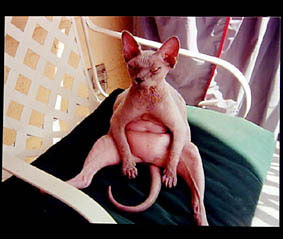
 A man stands next to a 490 liter Grande Cuvee TBA NV No.7 2005 of Austrian wine maker Kracher during its presentation Rehetobel Switzerland, some 40 km (26 miles) from lake Constance on November 28, 2007.
A man stands next to a 490 liter Grande Cuvee TBA NV No.7 2005 of Austrian wine maker Kracher during its presentation Rehetobel Switzerland, some 40 km (26 miles) from lake Constance on November 28, 2007. Mercer Health and Sanitation Index Score: 46.8
Mercer Health and Sanitation Index Score: 46.8 Mercer Health and Sanitation Index Score: 46.6
Mercer Health and Sanitation Index Score: 46.6 Mercer Health and Sanitation Index Score: 46.3
Mercer Health and Sanitation Index Score: 46.3 Mercer Health and Sanitation Index Score: 45.2
Mercer Health and Sanitation Index Score: 45.2 Mercer Health and Sanitation Index Score: 45
Mercer Health and Sanitation Index Score: 45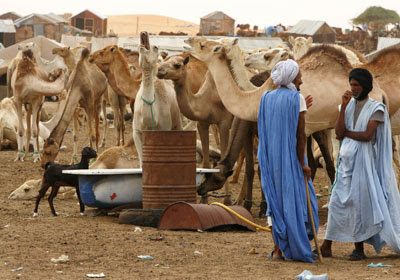 Mercer Health and Sanitation Index Score: 44.7
Mercer Health and Sanitation Index Score: 44.7 Mercer Health and Sanitation Index Score: 44.2
Mercer Health and Sanitation Index Score: 44.2 Mercer Health and Sanitation Index Score: 44.1
Mercer Health and Sanitation Index Score: 44.1 Mercer Health and Sanitation Index Score: 43.8
Mercer Health and Sanitation Index Score: 43.8 Mercer Health and Sanitation Index Score: 43.7
Mercer Health and Sanitation Index Score: 43.7 Mercer Health and Sanitation Index Score: 43.4
Mercer Health and Sanitation Index Score: 43.4 Mercer Health and Sanitation Index Score: 43.2
Mercer Health and Sanitation Index Score: 43.2 Mercer Health and Sanitation Index Score: 42.1
Mercer Health and Sanitation Index Score: 42.1 Mercer Health and Sanitation Index Score: 40.4
Mercer Health and Sanitation Index Score: 40.4 Mercer Health and Sanitation Index Score: 39.7
Mercer Health and Sanitation Index Score: 39.7 Mercer Health and Sanitation Index Score: 39.1
Mercer Health and Sanitation Index Score: 39.1 Mercer Health and Sanitation Index Score: 39.1
Mercer Health and Sanitation Index Score: 39.1 Mercer Health and Sanitation Index Score: 39
Mercer Health and Sanitation Index Score: 39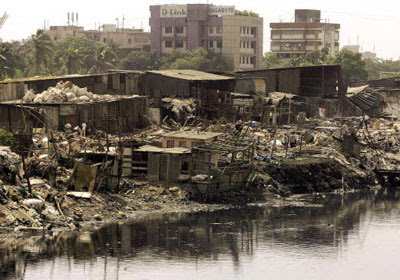 Mercer Health and Sanitation Index Score: 38.2
Mercer Health and Sanitation Index Score: 38.2 Mercer Health and Sanitation Index Score: 37.9
Mercer Health and Sanitation Index Score: 37.9 Mercer Health and Sanitation Index Score: 37.7
Mercer Health and Sanitation Index Score: 37.7 Mercer Health and Sanitation Index Score: 34
Mercer Health and Sanitation Index Score: 34 Mercer Health and Sanitation Index Score: 30.1
Mercer Health and Sanitation Index Score: 30.1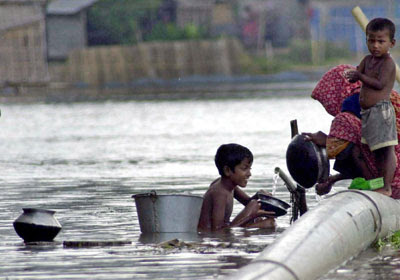 Mercer Health and Sanitation Index Score: 29.6
Mercer Health and Sanitation Index Score: 29.6 Mercer Health and Sanitation Index Score: 27.6
Mercer Health and Sanitation Index Score: 27.6







